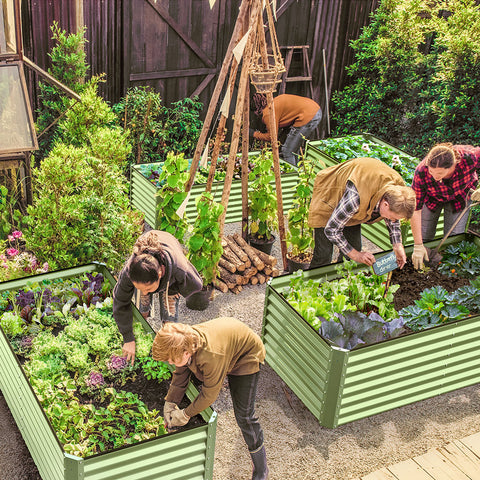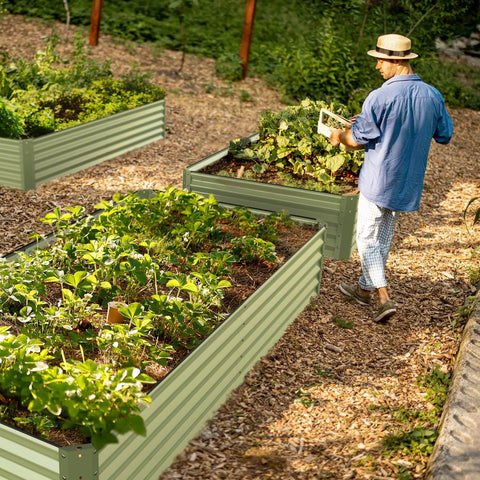With the increasing awareness of environmental protection and the increasing pressure on water resources, rainwater harvesting systems have become a popular measure to protect the environment at home. Among them, the function of the rainwater collector is to collect and store rainwater for future use. This article introduces the style and principle of the rainwater collector.The following content also has some reference value for raised garden beds.
Style
Bucket rain collector:
1, slope roof: convenient and rapid collection of rainwater, the larger the area, the more can be collected.
2, eaves flow water trough: the general building has a water trough, if there is no online to find the roof water system or water trough, or use waste materials, install one.
3, downspout: downspout is connected to the flow tank, and the water into the gutter.
4.Water diversion pipe: above the rain barrel, a water pipe is drawn from the original downspout and the water is introduced into the collection bucket.
5, bucket cover: where the water pipe introduces rainwater, some filter device is needed to prevent mosquitoes from entering your bucket to breed.
6.Overflow mouth: Near the top of the bucket, when the bucket is filled with water, the water will overflow from the mouth. The overflow mouth should be at least 2.5 meters away from the foundation of your house, and can be connected to the original drainage channel, or led into the rain garden.
7.Faucet: 10 cm near the bottom of the bucket to fill your watering pot or connect to the garden hose
Tubular rainwater collector: A tubular rainwater collector is usually a pipe installed under the roof or eaves to collect rainwater. It has the advantage of being simple and easy to use, requiring only the connection of the pipe to the water storage bucket. The disadvantage is that the collection area is small, can not collect a lot of rainwater.
Funnel rainwater collector: Funnel rainwater collector is a funnel-shaped device installed under the roof or eaves to collect rainwater. Its advantage is that the collection area is large, can collect a lot of rainwater. The disadvantage is that it needs to be cleaned regularly, otherwise it is easy to be blocked by debris.
Net rain collector: A net rain collector is a device that collects rainwater by installing a grid. Its advantage is that it can filter out most of the debris and ensure that the water in the storage tank is clean. The disadvantage is that it needs to be cleaned regularly, otherwise the grid is easily blocked.
Underground rainwater collector: An underground rainwater collector is a device that collects rainwater into the ground. Its advantage is that it can collect a lot of rainwater, and does not take up space, does not affect the appearance of the house. The disadvantage is that it requires high cost and installation by professionals.
Ii. Principle
The principle of a rainwater collector is simple: when rain falls on the roof or eaves, it is collected through a device such as a tube or funnel into a water storage bucket. The water storage bucket is usually located outside and can be used for watering flowers, washing cars, flushing toilets and other purposes through water pipes or pumps.
It is worth noting that because rainwater may contain some pollutants, such as dust, leaves, bird droppings, etc., it is necessary to use some filtration devices, such as mesh, filter element, etc., to ensure that the water in the storage bucket is clean. Water storage tanks also need to be cleaned regularly to avoid contamination and odors.
In short, the rainwater collector is a simple, practical environmental protection equipment, can help us make full use of natural resources, reduce water costs, but also can protect the environment, reduce the waste of water resources.









